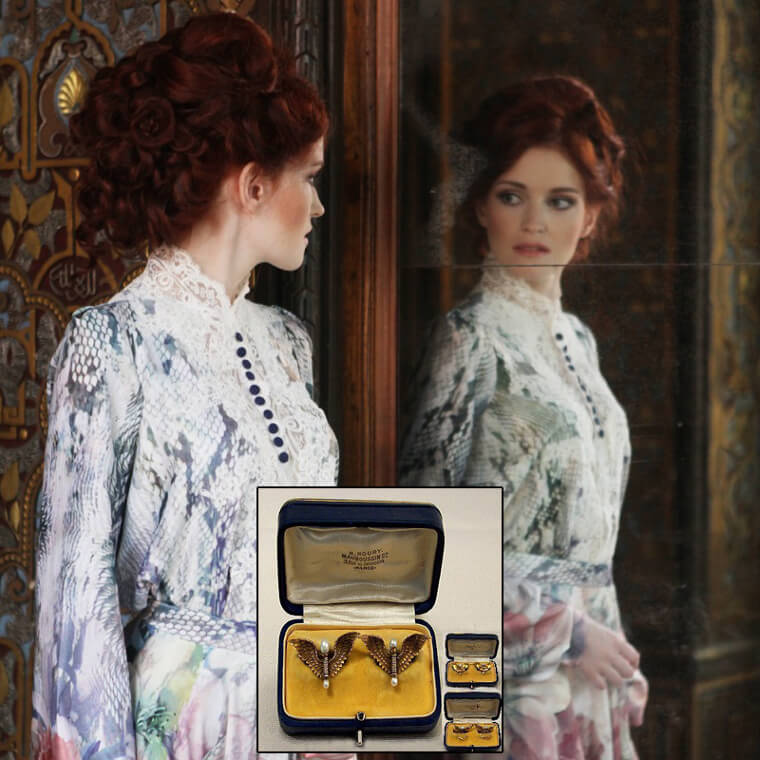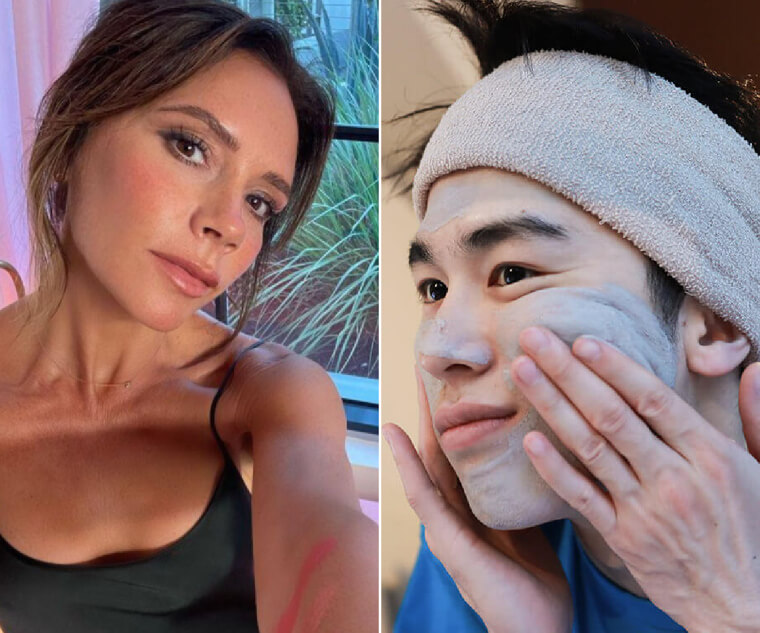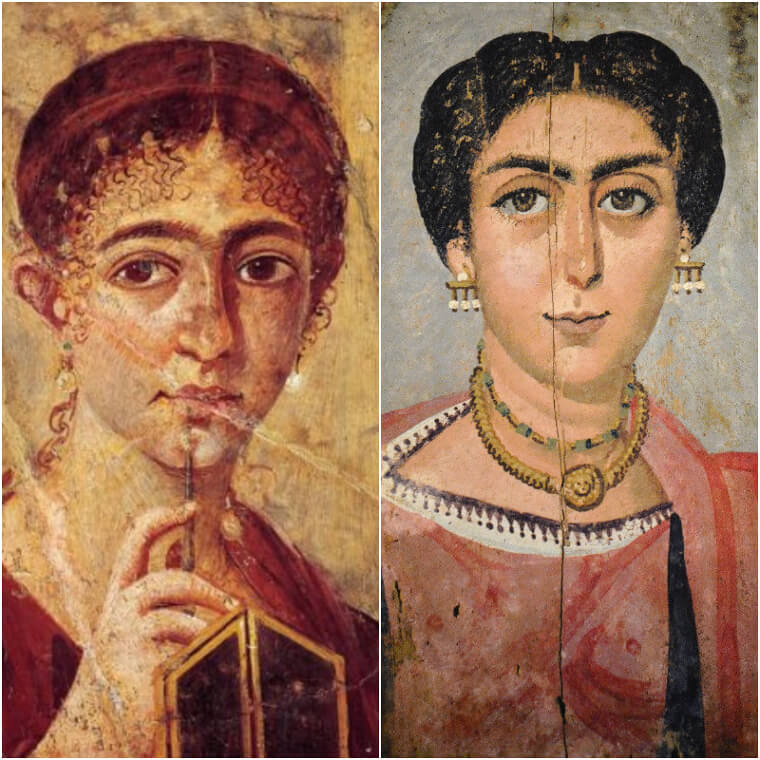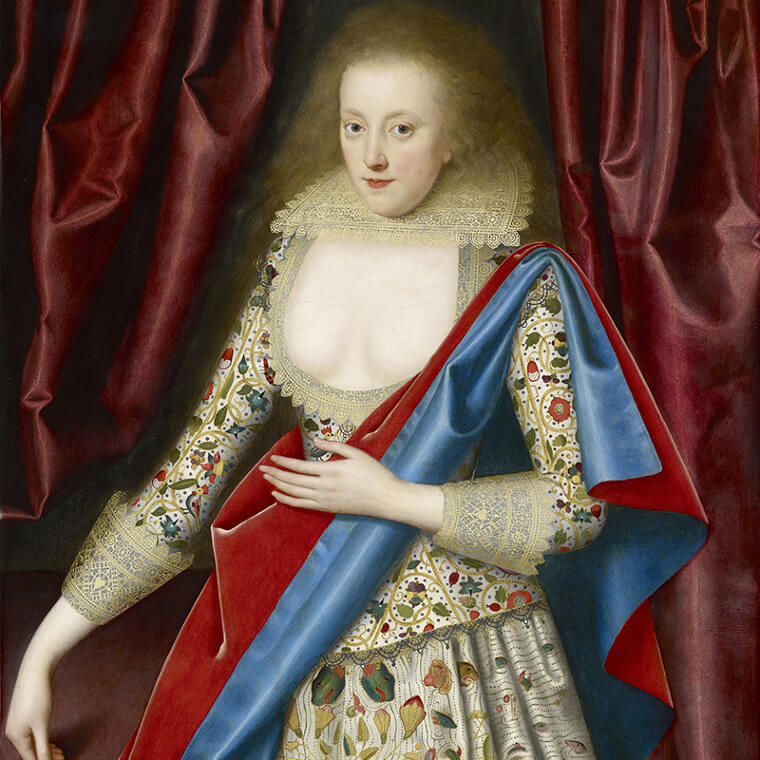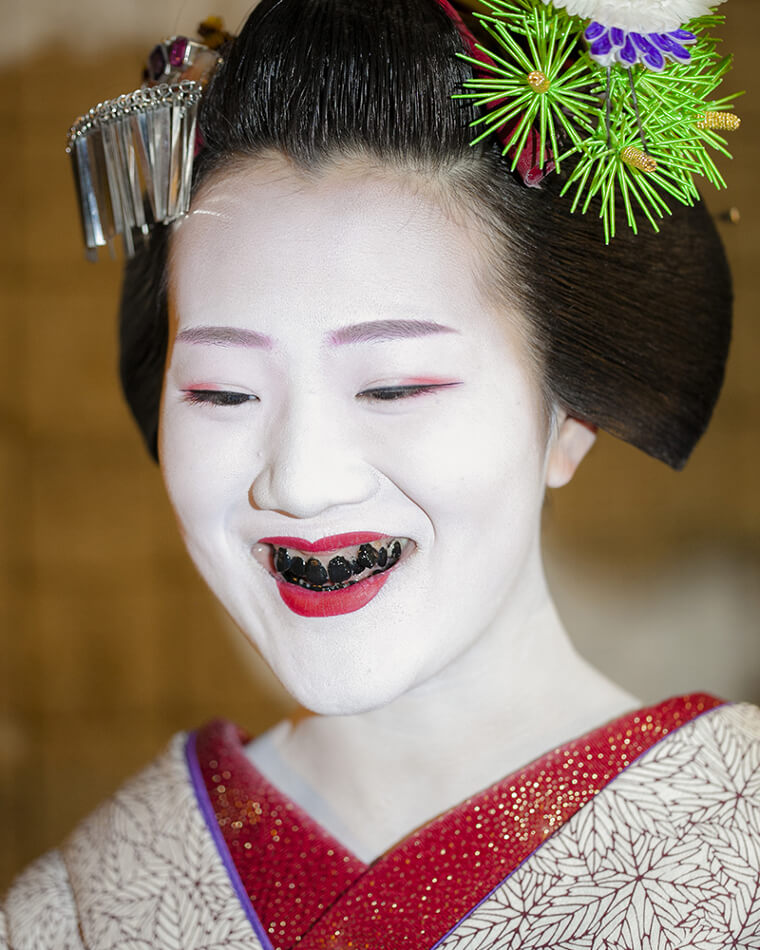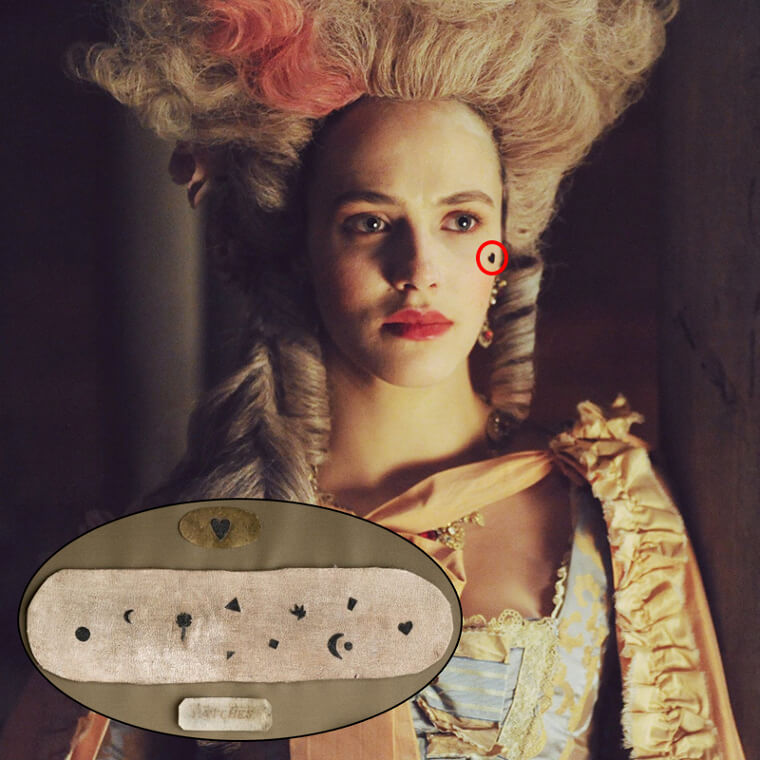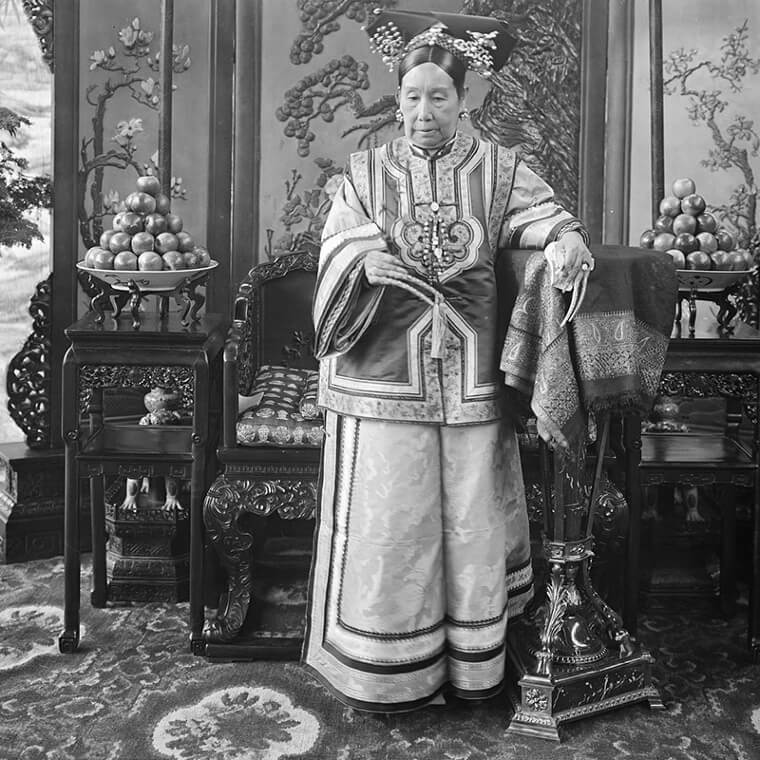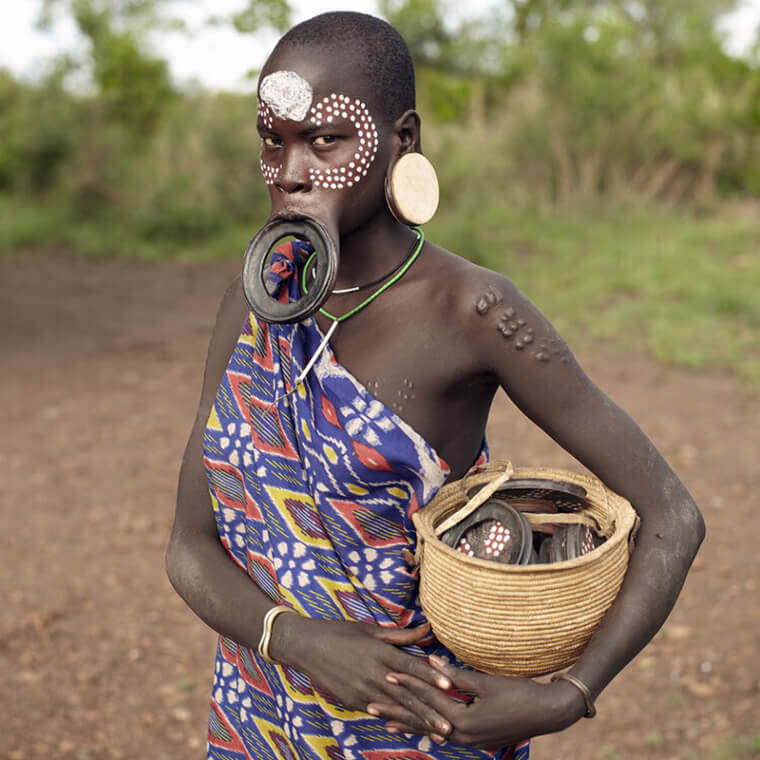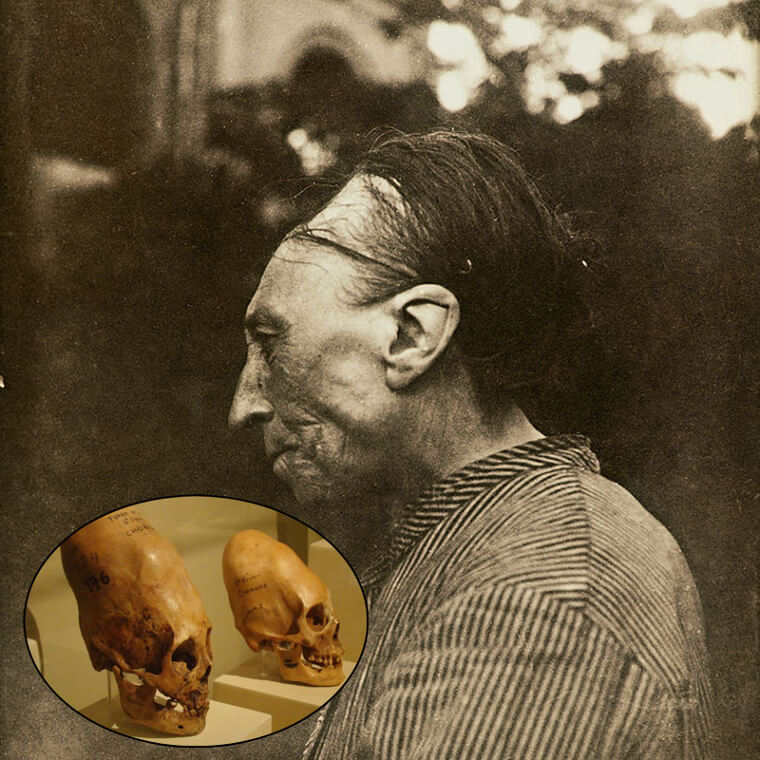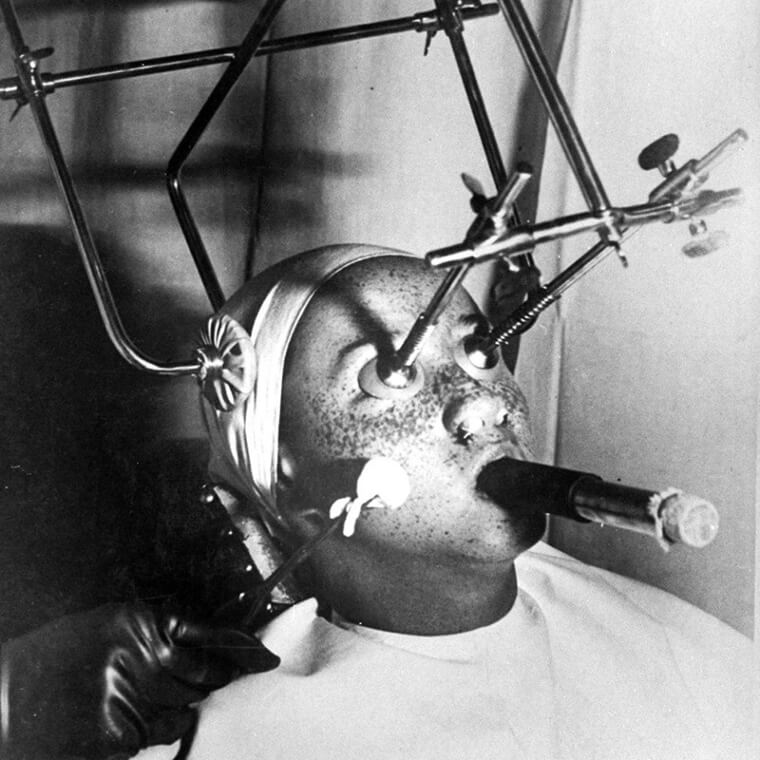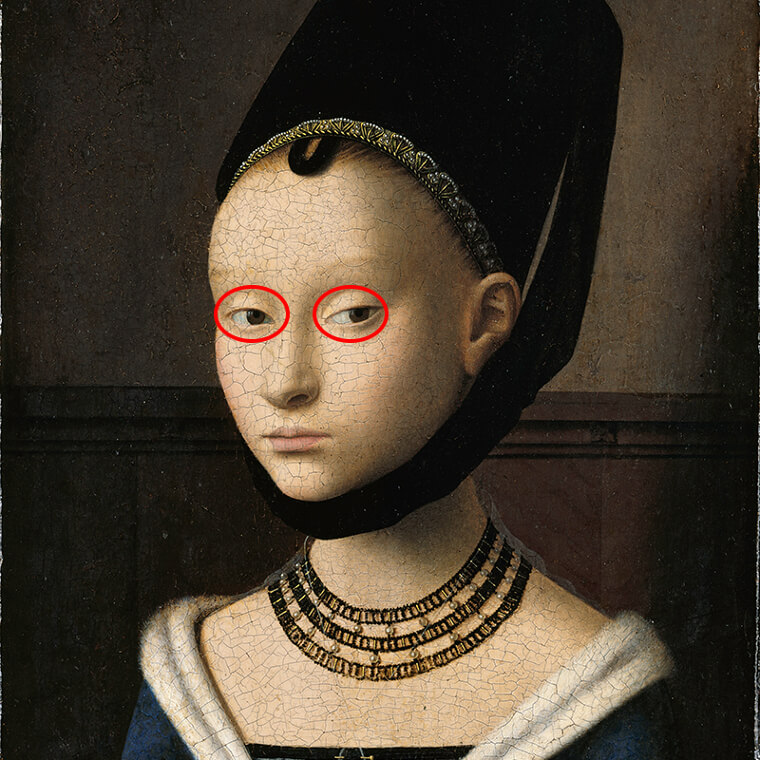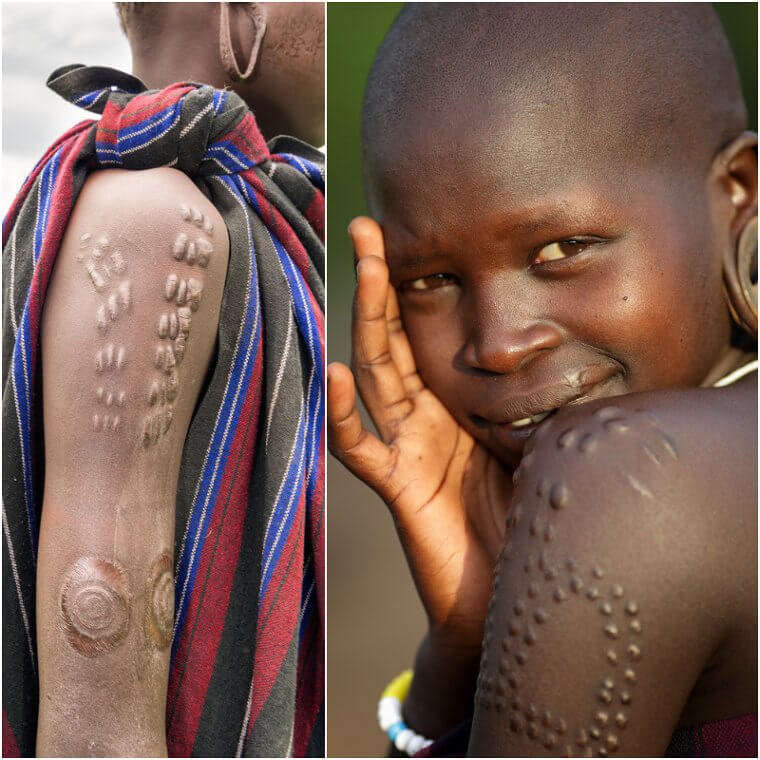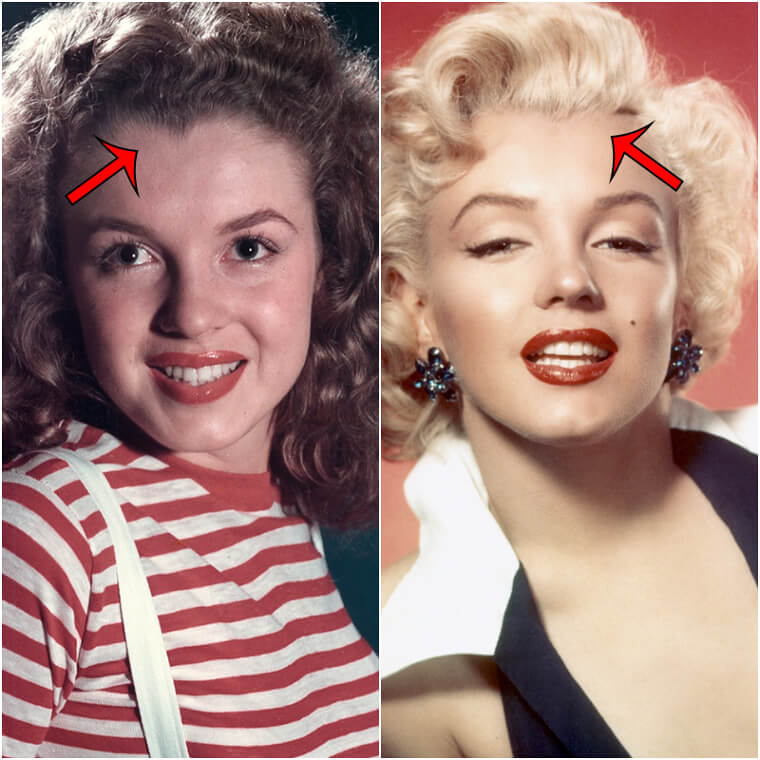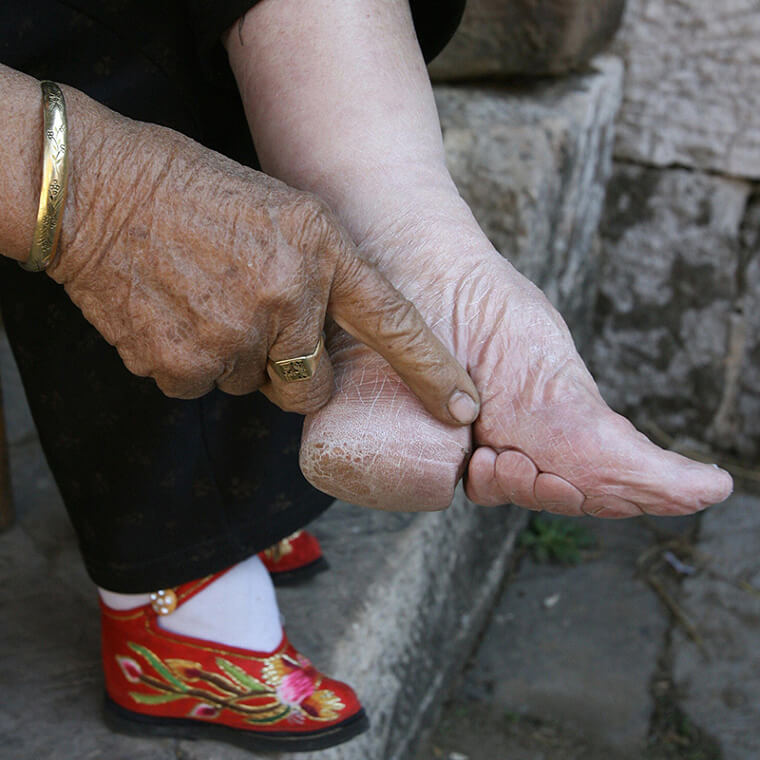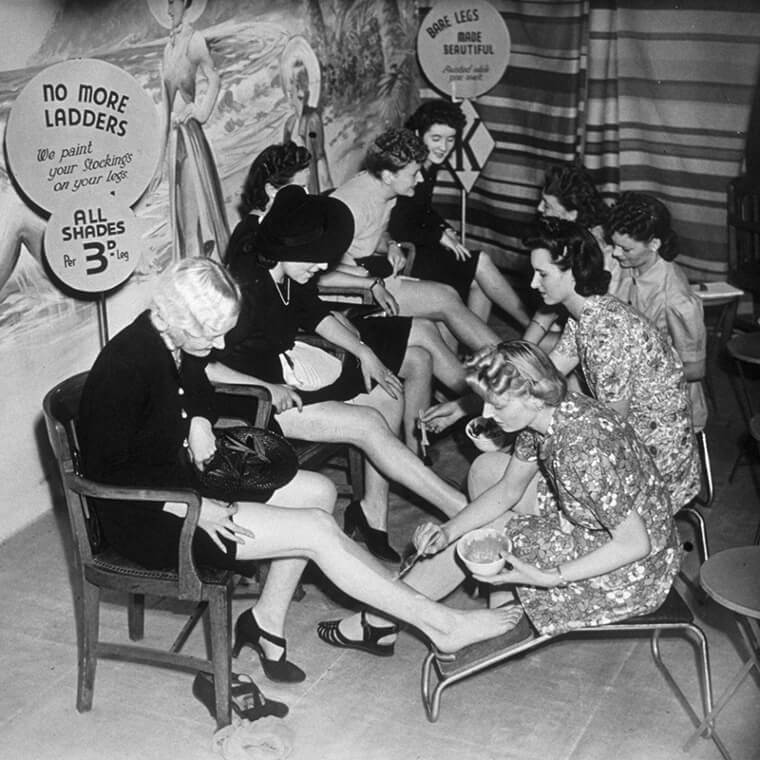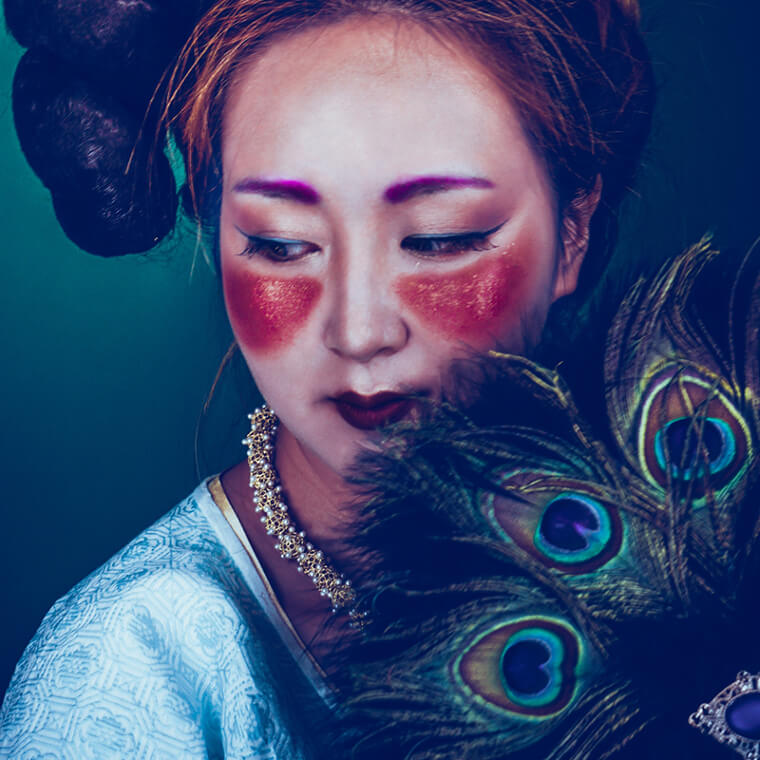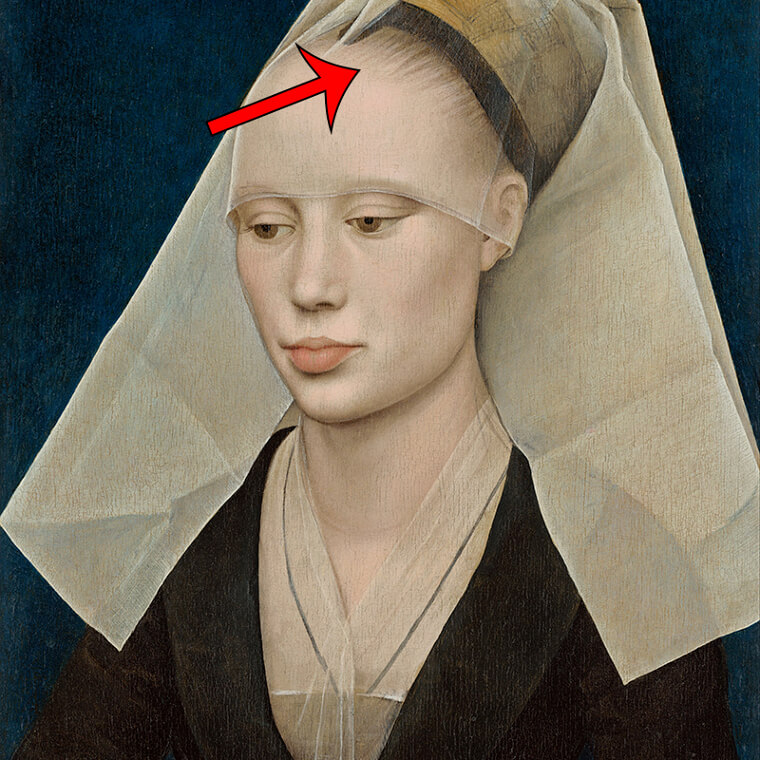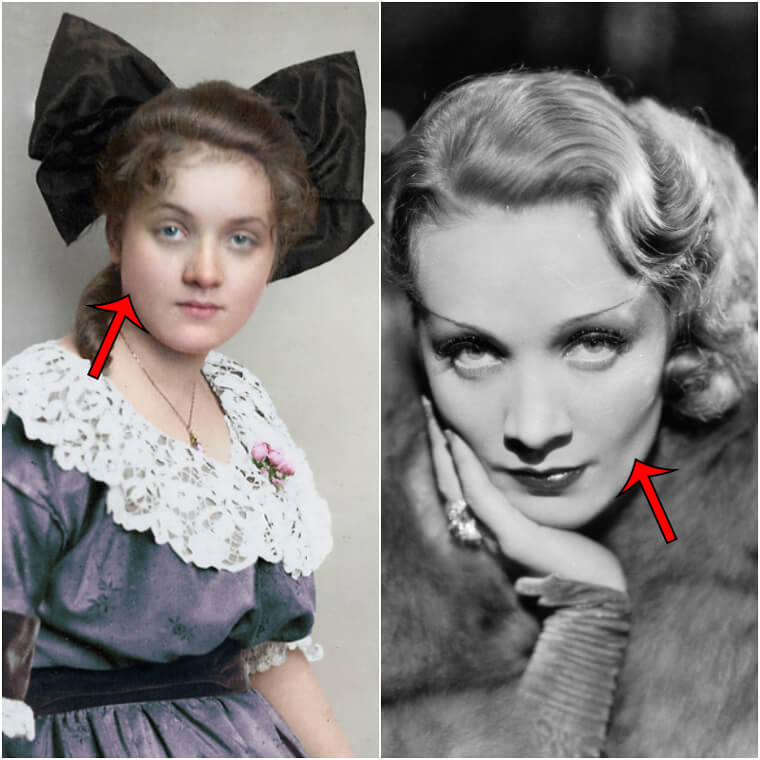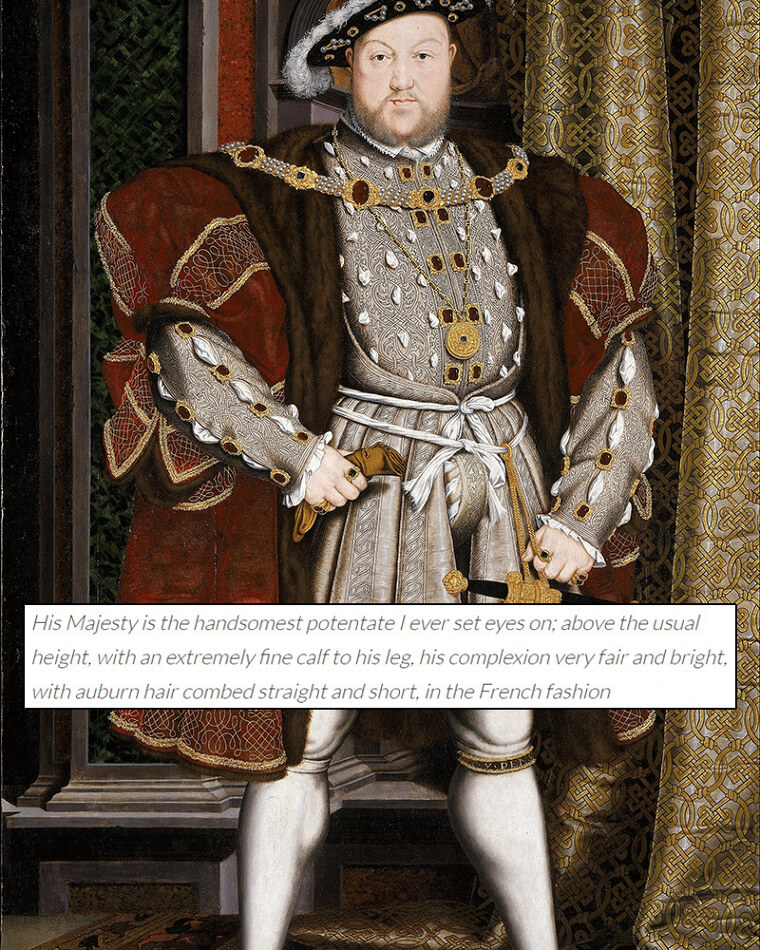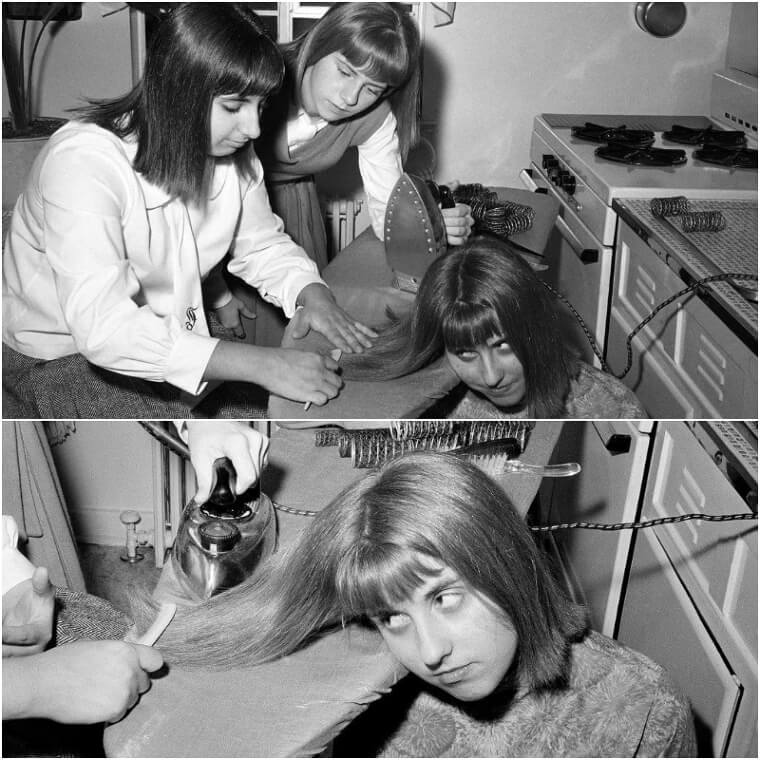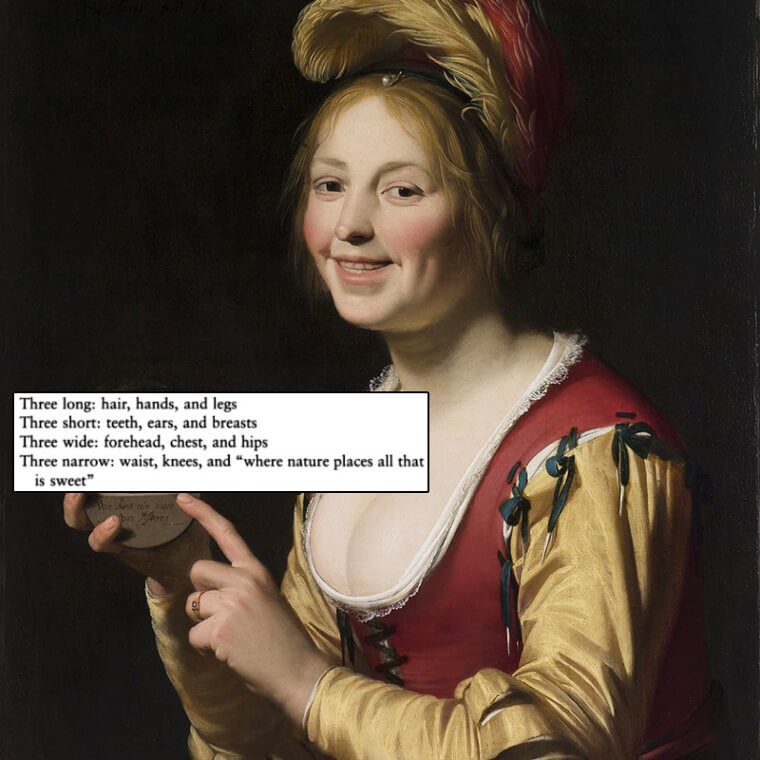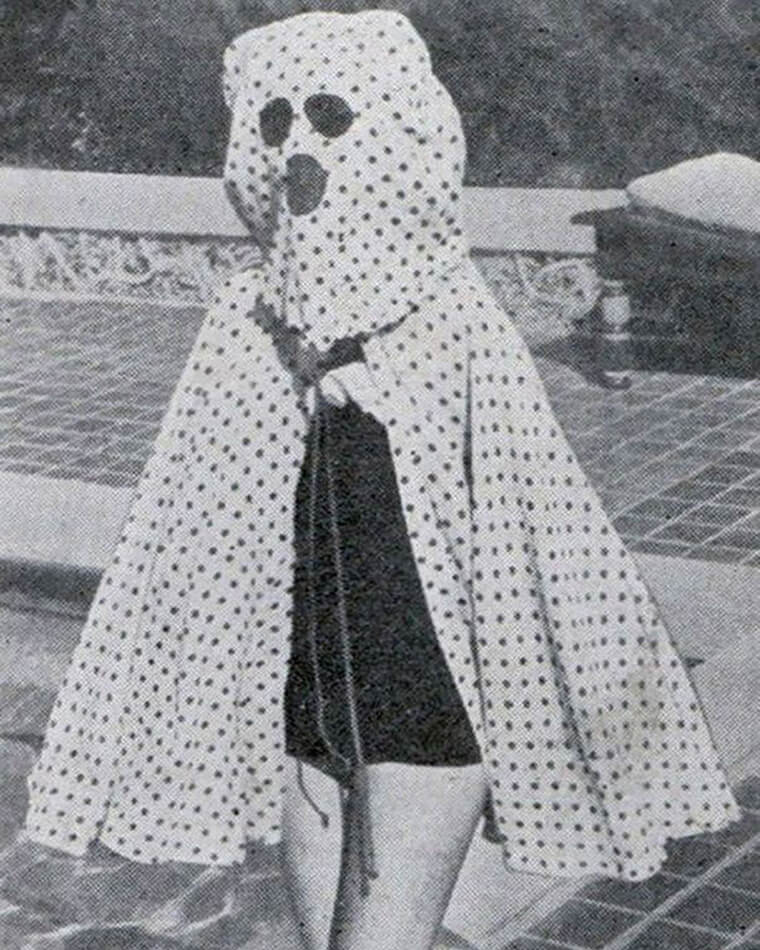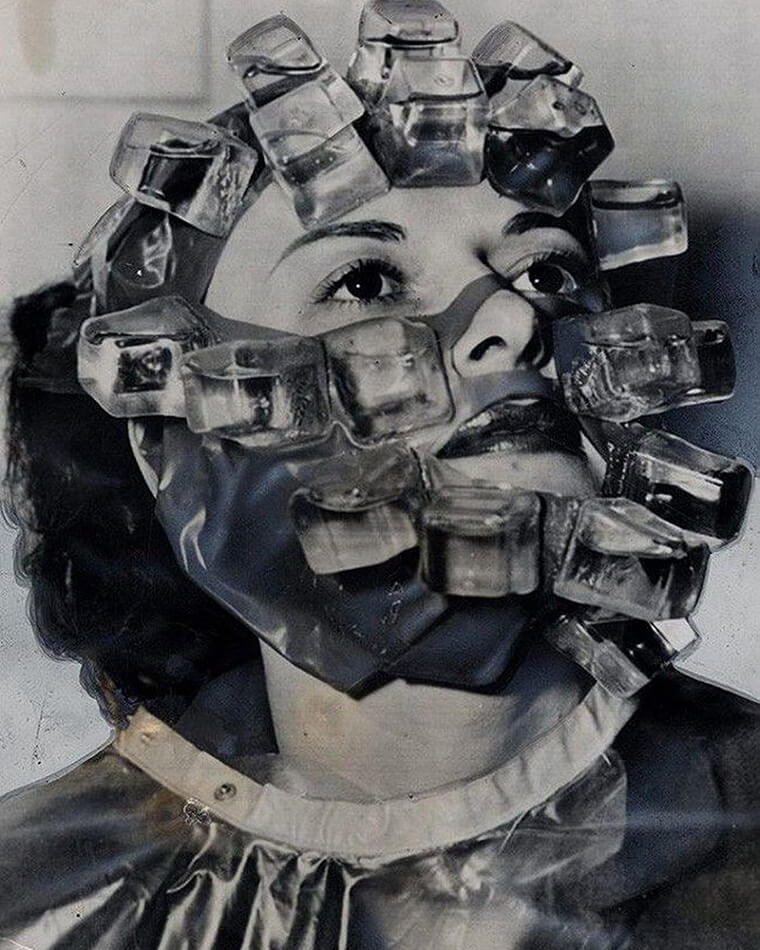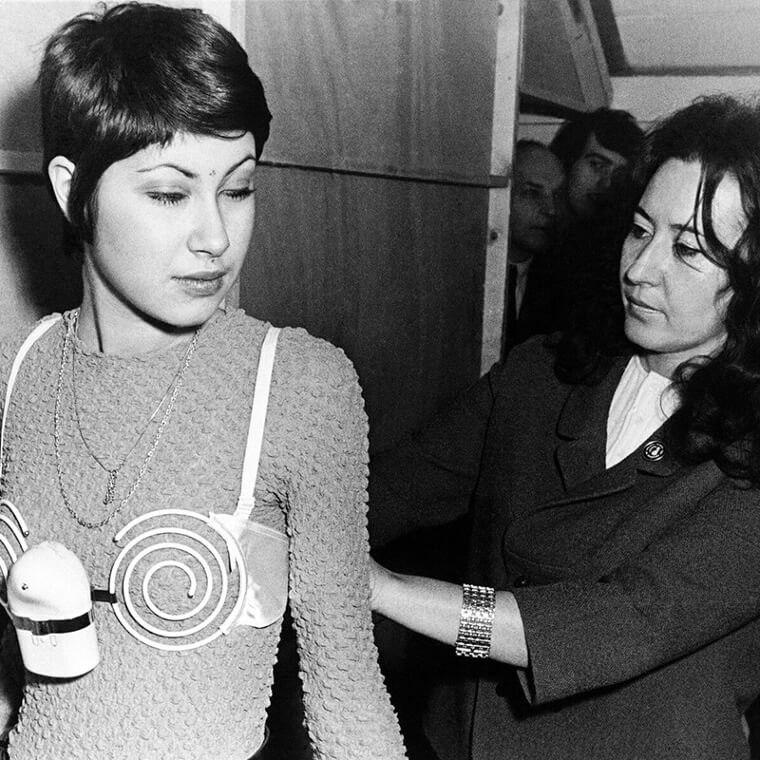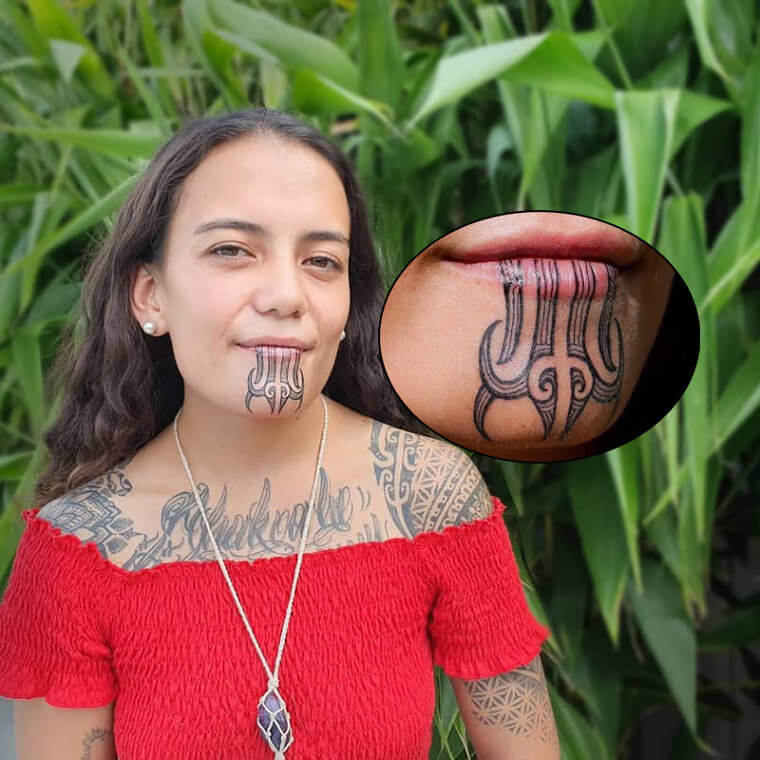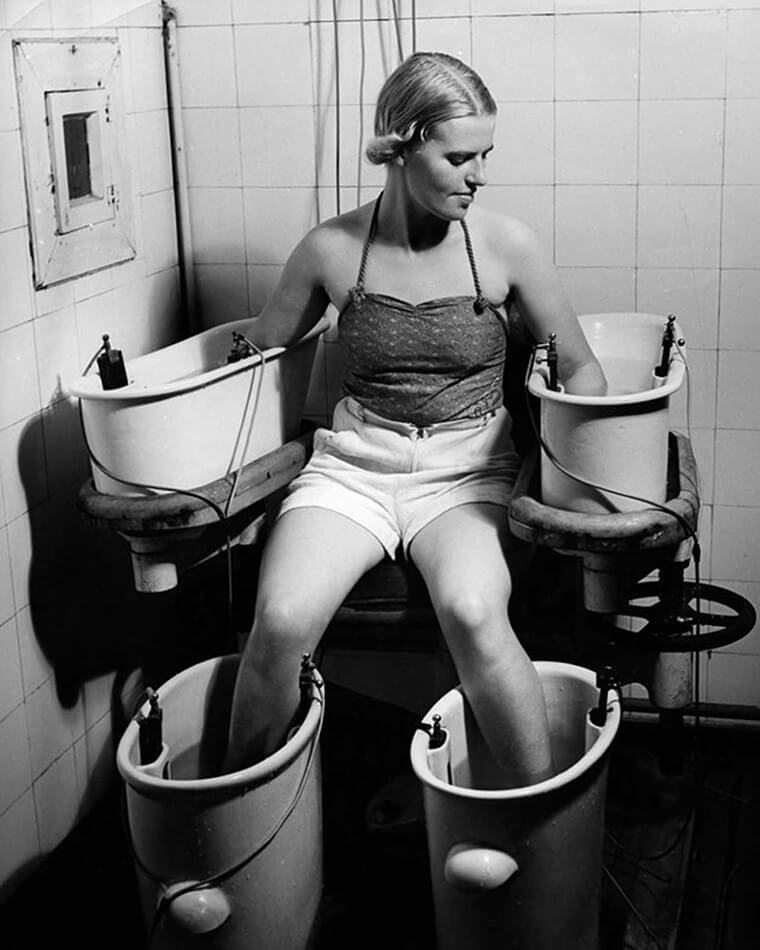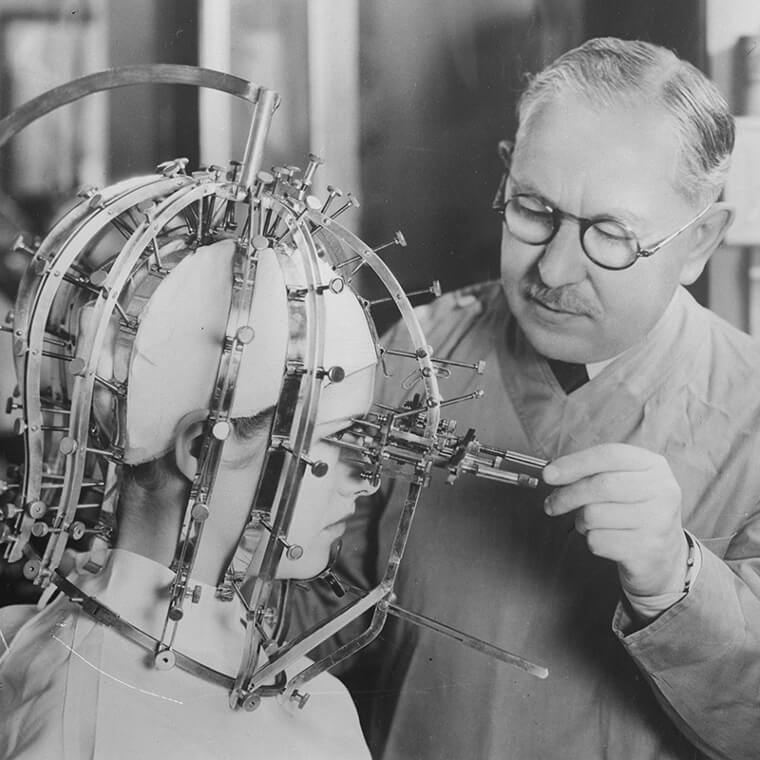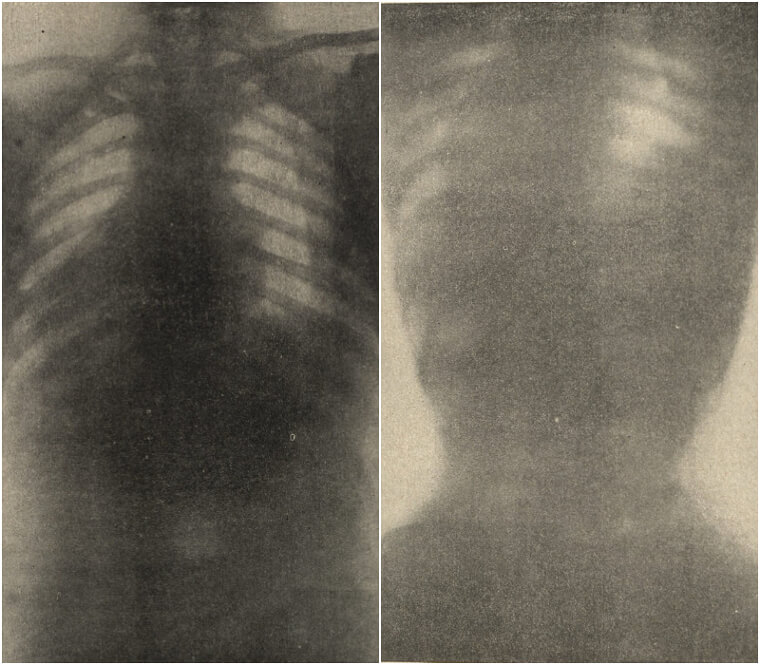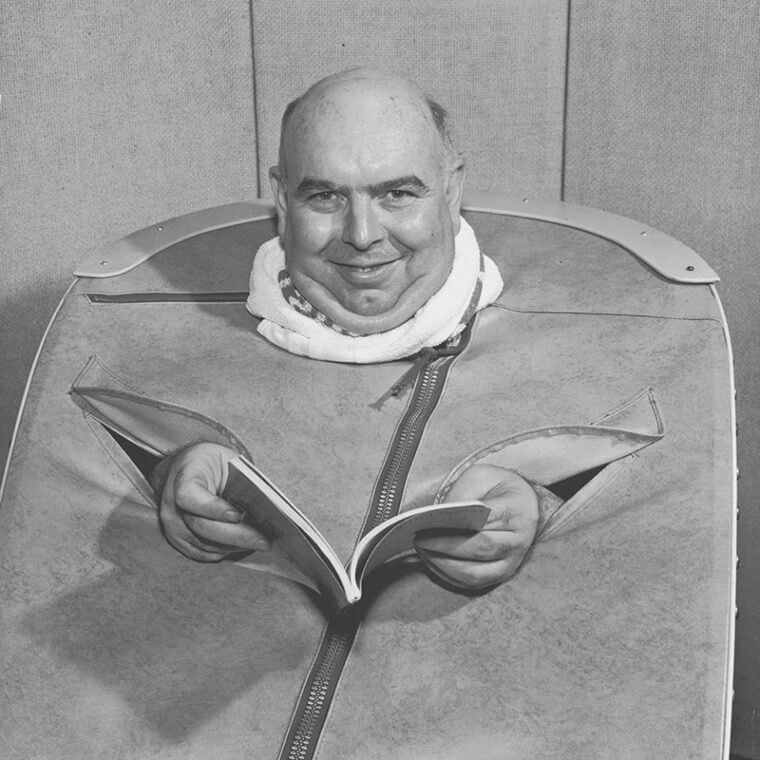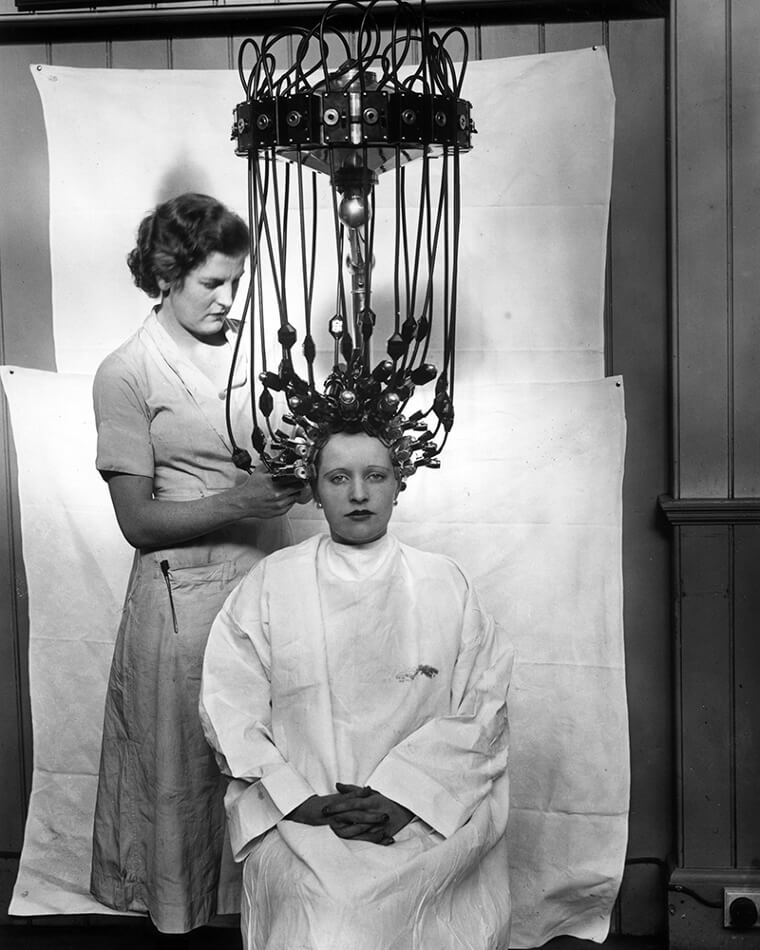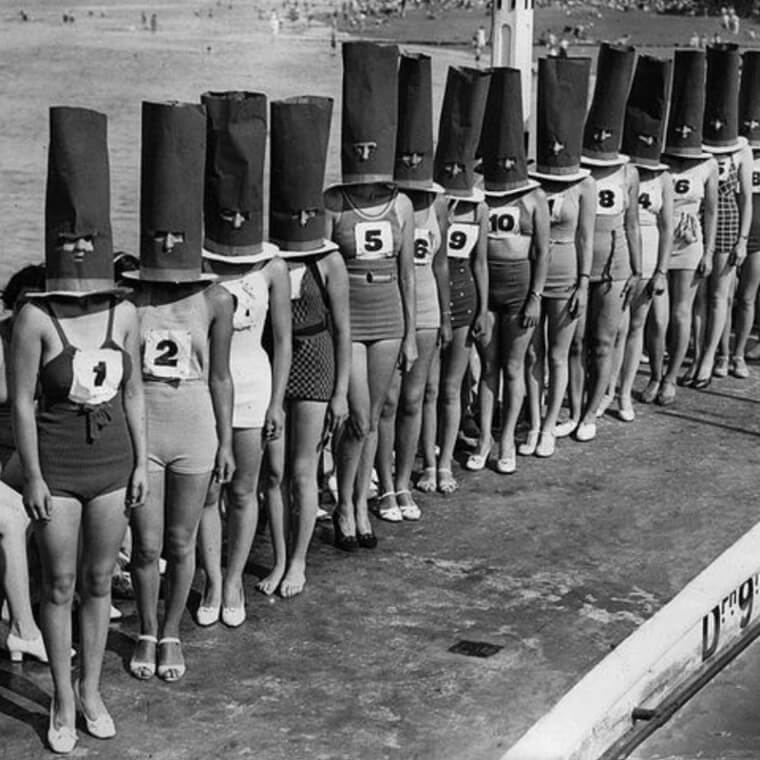Victorian People Rocked Piercings in All Kinds of Intimate Places
In today's popular perception, the Victorian era - spanning roughly 1820 to 1914 - was all about repression. Named after Queen Victoria, the epitome of strait-laced primness, we often imagine that everyone who lived during that era was buttoned up to the eyeballs. Showing as little skin as possible - that's what Victorians were about, right? Right - but not ONLY about that. Keeping up appearances was important, but it's what you DIDN'T see that was intriguing.
Apparently, wealthy women had a habit of piercing their nipples, often connecting them with a chain. Men, meanwhile, sported a "Prince Albert" (after Victoria's husband) - a genital piercing still in use today.
The Mentawai Women of Indonesia Chisel Their Teeth into Sharp Points
We break into a cold sweat just thinking about going to the dentist, but the Mentawai women of Indonesia have their teeth chiseled to sharp points - without any anesthesia whatsoever. According to these hunter-gatherers' beliefs, the soul and body are separate - and the former may try to escape the latter if it isn't pleased with it. As a result, Mentawai people wish to appear beautiful - partly by sharpening their teeth.
This custom's still practiced today, though it isn't widespread. Nowadays, a sharp chisel and blunt instrument are used to chip away at the teeth. No anesthetic is used, and only green bananas are supplied later to dull the pain.
Victoria Beckham Swears by This Ancient Japanese Bird Poop Facial
In the U.S., people pay hundreds of dollars for spray-on tans. In Japan, women think light skin's the most desirable, as it's a status symbol for not having to spend their time working outside. Japanese women, then, may resort to methods as extreme as bleaching their skin with toxins to achieve porcelain white skin. There is a more traditional method, though - and celebs like Victoria Beckham are obsessed with it.
Uguisu no fun originated centuries ago and involves an unusual ingredient - nightingale droppings. The poop's ground into powder, and then mixed with water to create a face wash. It's also available stateside now - one New York spa offers it for $180.
Ancient Greeks Loved Nothing More Than a Bushy Black Unibrow
Eyebrows are fascinating. Why are you laughing? We mean it. By tracing what historically has been perceived as "beautiful eyebrows," you can learn quite a lot about the idea of beauty in general in that time period. In the early 2000s, for example, they were pretty much plucked completely away, while today the bushy eyebrows of Cara Delevingne and Emilia Clarke are considered tres chic. But what about ancient times?
Well, in Ancient Greece there was nothing more alluring than unibrows. Considered a sign of intelligence and purity, women would also use kohl, a black powder, to make theirs an even bolder shade of black.
Rich Women in 17th-Century England Drew Veins on Their Cleavage
Throughout modern history, women's fashions have been a pendulum, swinging between revealing and buttoned-up styles as public morality changed. In 17th-century England, the pendulum swung hard to showing more skin. Necklines plunged, and cleavage became one of the most prominent weapons in a woman's fashion arsenal. At the same time, extreme paleness became fashionable again. The rationale was simple - having a tan meant, simply put, that you were lower class.
Only those coming from wealth, it was believed, could afford to stay out of the sun. Now, in order for that paleness to extend to their chests, women often drew blue veins on them to mimic translucent skin.
Japanese Aristocrats Blackened Their Teeth When They Reached Puberty
Cliched jokes about Brits and their dental hygiene aside, most people today would look at someone with a mouth full of blackened teeth and gag. You might even say that the West is somewhat obsessed with brushing, flossing, and everything else related to dental health. Well, in Japan, right until the turn of the 20th century, things were very, very different. For about 1,500 years, black teeth were THE thing.
For centuries, Japanese aristocrats of both genders blackened their teeth upon reaching puberty. The custom later fell out of favor, continuing to be practiced only by married women and spinsters, as well as ladies of the night and geishas.
European Nobles Wore Facial Beauty Patches to Convey Secret Messages
Originating in 16th-century France, beauty patches became all the rage among the continent's upper classes. They served as adornments, much like jewelry does, but they also had a far more practical function - hiding smallpox scars, pockmarks, and other blemishes. By the 18th century, patches really took off. Since porcelain white skin was the way to go, using black patches, usually made from silk or velvet, made it pop even more.
Patches were available in a variety of shapes, from stars to hearts. Placement was crucial - a patch by the corner of the lips was flirtatious, while a patch on the left cheek meant a woman was engaged.
Do the Rings Padaung Women Wear Around Their Necks Really Stretch Them?
It's time for some myth-busting. We guarantee you've seen an image of a Padaung woman before, with her impossibly long neck encased in large brass rings. The truth, though, is that the necks of these tribeswomen from Burma aren't actually elongated at all. No one actually knows where the custom originated, but it's been speculated that it may have had something to do with making them less attractive to slavers.
Regardless, girls start wearing the coils when they're five, starting with five or six and adding another one every few years. Those coils actually push down on the shoulders, compressing the rib cage and making the neck seem longer.
Chinese Noblewomen Had Nails So Long They Couldn't Feed Themselves
Let's talk about the final chapter of imperial China - the Qing dynasty, which was overthrown by a military coup in 1912. Don't feel bad. After all, the last dynasty began its rule in 1636 - and its history of loving long fingernails is about as long! During the Qing dynasty's time, both men and women of noble birth grew nails to eight or even ten inches long. It was a sign of status and wealth.
Long nails broadcasted that you were so rich you didn't even need to feed or dress yourself. In order to protect those monstrosities, women wore nail guards, often made of jade and adorned with pearls.
Mursi Tribe Women Stretch Their Lips to Hold Huge Plates
In one of Ethiopia's most isolated regions resides the Mursi tribe, consisting of roughly 11,500 people. They're a tourist attraction, as they're probably the last group of African tribespeople where lip plating for women is still the norm. The custom is ancient, dating back to 6,000 BCE, and concerns preparing a woman for marriage. Starting as young as 13, Mursi women have their lips pierced and then stretched several times.
Gradually, bigger and heavier clay plates - crafted and decorated by the women themselves - will replace smaller ones, until they reach up to eight inches in width - often necessitating the removal of their lower front teeth.
All Across the World, People from Different Cultures Practiced Skull Shaping
If you have kids, think back to when they were about four weeks old. How tiny and fragile they looked, how helpless. Well, in multiple cultures spread out across both time and space, people looked at these infants and thought, "Time to go to work!" Yes, skull binding began about a month after birth and ended at six months, with the skull bent to resemble a flat, round or elongated shape.
In the Americas, the ancient Maya practiced it on both genders - just to achieve that desired look. Globally, multiple groups did the same, from the Huns of Central Asia to the Chinook tribes in North America.
A Device to Burn Off Freckles - One at a Time
Isn't it funny how the world seemed to do a complete 180 on freckles? These days, they're the hottest thing going. So much so, in fact, that people pay money - lots of it - to have temporary and even permanent freckles tattooed on their faces. Go back almost a century, though, and people paid big bucks - and were willing to suffer a lot of pain - just to get rid of them.
This photo's from 1930, showing a method used to remove freckles - individually. Looks complex, but it was really just using carbon dioxide (A.K.A. dry ice) to freeze them off like you would a boil. All the other plugs and tubes were completely medically unnecessary.
From None Whatsoever to Lash Transplants, Eyelashes' History Is Terrifying
Delving into the history of grooming eyelashes proves a little horrifying. Starting in the Middle Ages and ending with the early Renaissance, the Catholic Church issued a series of edicts declaring the presence of any female hair to be sinful. Focusing on the forehead as the focal point of beauty, women were forced to start plucking not just their eyebrows but their eyelashes as well. Sounds bad? It gets worse.
In the 1600s, women dyed eyelashes reddish-gold, after Queen Elizabeth I - but the dyes were made from sulfuric acid. Want worse still? In the 1800s, some Frenchwomen sewed hair from their heads onto their eyelids to achieve longer, thicker lashes - with minimal anesthesia.
One of Ethiopia's Isolated Tribes Practices Scarring to Resemble Cats
All across Ethiopia, various tribal societies practice scarification - the process of ritually scarring skin in intricate and elaborate patterns. The Suri people consider unscarred bodies "ugly" and brand males and females alike. In women, it's more decorative, but scarring on the stomach is seen as a sign of emotional maturity and a readiness to bear children. In men, a scar's added to their bodies after they've taken an enemy's life.
Other tribes also practice scarification. Bodi women, for example, use metal to scar their bodies, usually to produce coil patterns around their shoulders. People of the Karrayyu tribe, meanwhile, scar their cheeks to resemble cats.
Marilyn Monroe and Rita Hayworth Underwent Super Painful Hairline Electrolysis
We now live in an age where beauty is celebrated in all its forms. In Hollywood's Golden Age, though, there was only one ideal - the white one. As such, even the era's most beautiful and desirable stars had to make sure they conformed to standards. Take Rita Hayworth, for example. The biggest pin-up girl of the 1940s, she was actually born Margarita Carmen Cansino and was of mixed Spanish descent.
So, Hayworth underwent a year of electrolysis - a hair removal method using metal probes to shock follicles - to raise her hairline an inch. Marilyn Monroe also famously underwent the same procedure to get rid of her widow's peak.
Chinese Girls Broke and Distorted Their Feet to Resemble Crescents
The thoroughly revolting practice of foot binding originated in 10th-century China, inspired by an emperor's concubine, and took off in popularity from there among all classes. Ideally, women's feet were supposed to resemble crescent moons, and be no longer than three inches. So, when a girl was between the ages of five and seven, her feet were bandaged so tightly that the bones in them broke, contorted to resemble a crescent.
Women were forced to wear doll-like embroidered shoes, and were forbidden from removing them to preserve the illusion. Foot binding caused excruciating pain, not to mention lifelong disability, and was legally banned in 1928 - but didn't disappear until 1949.
Mauritanian Girls Are Force-Fed Four Times as Many Calories as Bodybuilders
We think it's fair to say Americans are obsessed with their weight, always after the newest, best diet fad. Well, in the West African country of Mauritania much the same thing happens - but in the opposite direction. Mauritanian women are considered beautiful if they're overweight, obese even - it's all a symbol of their husbands' wealth. The more well-off a man is, the more he can afford to feed his wife.
To achieve that look, girls as young as five undergo force-feeding, consuming up to 16,000 calories a day. Just for perspective, male bodybuilders might consume up to 4,000 daily calories. Girls who refuse to eat are beaten and abused.
Women Used Paint - and Even Gravy - to Mimic Pantyhose During WWII
As soon as it was socially acceptable for dresses to end at the knee, ladies needed something to still maintain some coverage. The solution was pantyhose, and from the 1920s until today, we can't really think of professional, well-dressed women without them. While that's true, there was a brief gap in coverage (no pun intended). During World War II, there was a nylon shortage, caused by using the material to manufacture parachutes and other wartime necessities.
Women couldn't go completely bare-legged, though, so someone came up with the bright idea of using paint to mimic stockings' tan appearance. When that wasn't enough, some women even used gravy!
Ancient Chinese Women Dyed Their Eyebrows Green, Purple, and Yellow
Since photography wasn't widely available until the mid-19th century, we tend to think of the people of the past as having lived in black and white. The farther back we go, the stronger that tendency grows. We're here to tell you it couldn't be further from the truth. Just look at the imperial courts of ancient China. Fashion forward aristocratic and royal Chinese women wore luxurious painted gowns - and their eyebrows matched.
Red, yellow, blue, green, and purple were all common sights. The most expensive pigments were imported from Persia. The cheaper alternative was oxidized copper - great if you don't mind heavy metal poisoning.
Renaissance Women Used Cat Poop Concoctions to Achieve Receding Hairlines
These days, just about the last thing a woman wants is a huge forehead. We mean, bangs were specifically invented to cover it! It wasn't always that way, though. Zooey Deschanel, if you happen to be reading this, we strongly suggest you skip this one. Back in the Renaissance, and especially during the 16th century, no fashion conscious woman would be caught out in public without a high, domed forehead.
Curved foreheads were an indicator of beauty and good breeding, so well-born European women plucked or shaved their hair. And if that didn't work, they'd resort to treatments involving vinegar mixed with things like cat poop.
Marlene Dietrich Had Her Molars Removed to Accentuate Her Cheekbones
German actress Marlene Dietrich was a remarkable woman. Not only one of the most popular and highest paid actresses of Hollywood's Golden Age, she was also a political activist - and renounced her German citizenship when World War II began to become an American. Simply put, Dietrich wasn't a woman who took "no" for an answer - regardless of what it took, which leads us to the following story about her molars.
According to Hollywood lore, Dietrich had several molars removed to accentuate her dramatic cheekbones. Studying earlier photos of her, it's hard not to suspect it's true. Fellow icon Joan Crawford is said to have done the same thing.
Medieval Men's Calves Were Like the Toned Abs of Today
For obvious reasons, when we discuss beauty we often talk about women. After all, their job was to look pretty while it was men's job to provide, right? Not always. If you look away from the lower classes to the aristocracy and royalty, in fact, you'll see there was a surprising amount of fuss surrounding men doing their best to look attractive. Maybe medieval times' strangest fascination, though, is calves.
Slender, shapely legs were all the rage for medieval men. Henry VIII was a particularly fine specimen - described by a contemporary as having "an extremely fine calf to his leg." He even supposedly engaged in "calf-muscle bulging" contests!
The Maasai People of Kenya Stretch Their Earlobes Using Elephant Tusks
Kenya's Maasai people are pretty famous - their colorful clothes and fascinating culture have made them mainstays of African tribe documentaries. What you might not be aware of, however, is the extensive amount of body modifications practiced by men and women alike. One notable example is earlobe stretching. Done by both men and women in childhood, the earlobes are pierced and then stretched using twigs, stones, and even empty film canisters.
As they gradually enlarge these holes over time, extremely large-spaced lobes are considered a sign of wisdom and respect. Tooth removal is also practiced - usually the upper canines or lower central teeth are removed, supposedly to circumvent illness.
Big City Girls in the '60s Literally Ironed Their Hair
In the '40s and '50s, curly hair was the height of fashion. Now, just like the '60s were the decade of women's liberation, they were also the decade of their hair's liberation. Tired of hours of applying hairspray and countless hours in curlers, girls started a mini-revolution - going completely flat by straightening their hair using irons. Oh, not flat irons - we mean literal clothes irons, on ironing boards.
Sounds-- dangerous. Nevertheless, before flat irons became widespread later that decade, it wasn't uncommon to see groups of friends get together to iron each other's hair. It worked - if you could avoid having it scorched.
In the Renaissance, a Beautiful Smile Meant a Ton of Gums
If you think technology brought people together, you ain't seen nothing yet. For 300 years, the ideal of feminine beauty across all of Europe was essentially the same. Freed from the medieval perception that beauty and grooming were sinful, the Renaissance saw beauty as an outer expression of inner goodness. As such, women had literal lists of 30 attributes they needed to check off in order to be considered beautiful.
Many would be familiar and obvious to us, like long legs and narrow waists, but here's a surprising one - short teeth. That's right, for whatever reason, gummy smiles were irresistible.
In the 1930s, People Wore Anti-Sun Hoods Because They Feared Freckles
This young woman may seem like she's on her way to ComicCon wearing the world's worst Casper the Friendly Ghost cosplay, but there's a different story here. Before Austrian chemist Franz Greiter came up with modern sunscreen in 1946, people had to get-- creative. This photo, from the 1930s, shows one such innovative solution. The cape protected wearers from the sun, as people feared sunburns and freckles in equal measure.
It also featured built-in sunglasses, and looked absolutely redonkulous. We're guessing folks heaved a sigh of relief when Greiter finally invented the good stuff with the SPF.
This Device Had Two Purposes - and Hollywood Starlets Needed Both
Though the Max Factor line of cosmetics is still around today, you'd be excused for not knowing it's named after a person rather than a really cool but meaningless phrase. Max Factor the man was a Polish-American beautician who got his start by doing make-up for movies. It was on movie sets, in fact, that he came up with this contraption, which seems to be an early prototype for Pinhead.
What it really is, though, is an ice mask used to cool off Hollywood actresses between takes, because sets ran very hot and actual water would've ruined their make-up. It was later used, naturally, to combat hangovers.
This Isn't a Set Photo from Austin Powers but an Actual Invention
This photo's pretty strange, but honestly - knowing the backstory behind it only makes it a fraction less so. Taken at the 20th International Show of Inventions in Brussels, in March, 1971, it showcases a brand new invention - a vibrating bra. Now, you might be asking yourself why anyone would want a vibrating bra. Actually, scratch that - you might be asking yourself why anyone would wear a vibrating bra IN PUBLIC.
The answer, apparently, is to develop and strengthen women's bust. Forget how ridiculous that is, just imagine sitting next to Karen from accounting as she vibrates all day. We're guessing it never made it past the prototype.
Maori Women Believe They're Born with Tattoos Close to Their Hearts
Tattoos aren't a big deal anymore - everyone and their grandmother has ink now. But while some tats commemorate nothing more than spring break in Daytona Beach, others have deep cultural roots that go back for centuries. One fascinating example of the latter involves the indigenous Maori people of New Zealand. For the Maori, getting tattooed was a rite of passage between childhood and adulthood. Most interesting, though, is the moko kauae - chin tattoos reserved for women.
According to Maori beliefs, women are born with a moko - or tattoo - close to their hearts, representing their link to their community and heritage. The tattoo artist, meanwhile, merely brings it to the surface.
This Device Promised Ladies They Too Could Look Like Shirley Temple
Putting aside that lady's objectively ROCKING outfit, the weird contraption on her face raises a lot of questions. Well, we have answers. In 1936, a Mrs. E. Isabella Gilbert came up with a dimple-making device. She was hitting the iron while it was scorching - that same year, Shirley Temple's dimples adorned movie theaters nationwide advertising her new movie, literally called Dimples. What Gilbert promised women was that they too could have dimples - if they used her device.
Dimple makers became such a fad that door-to-door peddlers hawked them. In one community, salesmen bilked locals out of $8,000 - over $158,000 in today's money - selling them. Spoiler - they didn't work.
25 Cents to Put That Gross Mask On? What a Steal!
Initially, we thought this photo was from the set of a Purge prequel. We mean, it might eventually be used for one - we're told they're still making them - but the reality is actually a little more disturbing. Through the use of this thoroughly creepy mask, wearers would supposedly improve their circulation and rejuvenate their skin. Admirable goals, most certainly. We're just not sure about how it went about achieving them.
Starting in the 1930s, people used diathermy - deep heating the skin using electrical currents. It's scientifically valid - we just wouldn't to pay to stick a germ-infested mask on our faces that hundreds of other people have sweated into beforehand.
Early Electric Chair Prototype or Just Electrotherapy? Why Not Both?
If this lady wasn't so nonchalant and casually dressed, we may have guessed that this was a photo of an experimental new execution method. Knowing what it actually is, well - we weren't that far off, to be honest. People in the 1930s were apparently obsessed with improving blood circulation, as if that was the cure for everything that ailed them. As always, where there's demand, there will eventually be supply.
In this case, it came in the form of these 1938 galvanic baths. Sticking your limbs in water that gets zapped with electricity may sound like a bad idea, but it's apparently not dangerous - just pointless.
This Device Told People How Ugly They Were in Innovative Ways
And you thought people today were obsessed with appearance. In 1932, Max Factor came up with a so-called "beauty micrometer." Factor, whose eponymous cosmetics line is still around today, made his name in Hollywood as a premier make-up artist, working on stars like Charlie Chaplin, Joan Crawford, and Rudolph Valentino. With this device, Factor took on a gargantuan task - destroying their self esteem by scrutinizing their faces for microscopic ugliness.
This reject from A Clockwork Orange measured every bit of a face, looking for "defects" - eyes that weren't exactly one eyeball-width apart or noses and foreheads that weren't the same height. Then, these problems could be corrected using make-up. It didn't catch on.
The S-Bend Was Supposed to Move Corsets Forward - but Pushed Spines Back
If there's one item of clothing that's absolutely synonymous with the Victorian period, it has to be the corset. However, we'd like to focus on the Edwardian period, which immediately followed the Victorian one and encompassed roughly the first two decades of the 20th century. This period saw an exciting new innovation - the S-bend corset, a seemingly healthier alternative to 19th-century corsets, which had by then fallen out of fashion.
The S-bend, which pushed torsos forward and hips backward, was supposed to relieve abdominal pressure. Ironically, it was later discovered it was actually worse than the old hourglass corset in how it unnaturally bent the spine.
Slenderizing Salons Promised Women Weight Loss Through Meat Tenderization Techniques
Losing weight has never NOT been on people's minds. The only thing that changed, really, is how they went about achieving that. Today, we're all about SoulCycles and Pelotons. In the 1940s, the new weight loss fad was "slenderizing salons," where machines were used to reshape women's bodies. Their promise, which aged really badly, was to slim down "without unladylike sweat or building dreaded muscles." What woman would want THOSE?
Through a really painful massage provided by metallic coils, muscles would contract and calories would subsequently be burned. All ladies had to do was stand there and take it. If it sounds too good to be true, it's because it was.
We'll Buy Whatever That Is If He Stops Looking at Us Like That
There's really no era of human existence in which this image wouldn't have induced nightmares in small children. We'll tell you what this guy is advertising in a second, but really - does it even matter? If the spokesperson for your exciting new device is a middle-aged man seemingly being given birth from a shapeless blob, you made a wrong decision somewhere. Just for the record, that blob's a portable sauna.
While the photo's from 1955, they started exploding in the '40s. Supposedly, they melted fat by pumping air into that large bag, but all they really melted was people's ability to sleep at night.
In 1939, There Was No Difference Between Death Row and Getting Perms
Why is everything from the past so old-timey creepy? Seriously, you take something as simple as giving a girl curls, and you craft a machine that looks like aliens use it to steal human brainwaves. Phew, okay, we feel better. This is the "Wave Machine" from 1939, representing an ancient attempt at giving women a perm. Its humble promise? To turn every gal from a "chairlady" into a "glamor girl."
Back then, straight hair was out. The solution was as simple as sitting for about ten hours under 60 pounds of scalding hot brass irons suspended half an inch from your scalp. Man, beauty really is pain.
This Beauty Pageant Dared Ask Which Woman Most Resembles Abraham Lincoln's Hat
For the first half of the 20th century, the coastal region of Cliftonville was a popular vacation destination for people in the U.K. We can see why. We mean, what's better than spending a day at the beach, and then catching a beauty pageant for anthropomorphic Abe Lincoln hats? Say what you will about pageants and what horrible meat markets they are, but at least they don't do THIS anymore.
This photo, from 1936, captured a so-called faceless beauty pageant. Basically, it removes women's faces from the equation, judging them solely by their bodies. You know, that's actually even more dehumanizing than regular pageants. That's-- almost impressive.
We Never Thought of Tapeworms as 'Friends for a Fair Form'
So, there's this special turn-of-the-century diet that promises weight loss with no special change to your eating habits and no exercise. You really have to only do one thing - swallow a pill containing tapeworm eggs. Then, those eggs hatch inside your body and attach themselves to your stomach. Voila - instant weight loss, because those bad boys will be getting first dibs on anything you eat. Oh, there is one small disclaimer.
Remember how we said the worms will attach themselves to your stomach? So, they may just attach themselves to other vital organs. There are also small, almost insignificant side effects like dementia and death. The craziest part? People STILL do this diet today!
China's Weird Facekini Trend Actually Goes Almost a Century Back
In 2012, Western press caught wind of a bizarre Chinese trend - facekinis. These masks for swimmers and beachgoers cover the face, protecting users from both the sun and jellyfish stings. Here's the thing, though - we have short memories. Facekini-like abominations were around in the West - in the 1920s! This particular photo is from around 1928, and showcases a design so close to the Chinese facekini it almost seems like ripoff.
These earlier masks' goals were pretty much identical - protecting wearers from the sun and jellyfish stings. Interestingly, they eventually disappeared when other treatments for stings and sunburns, like sunscreen, came on the market.

